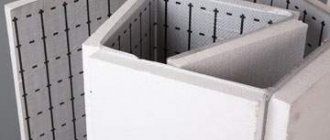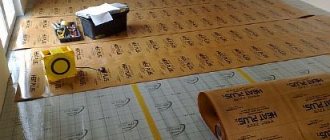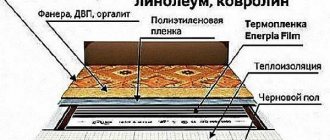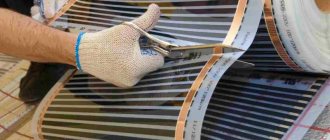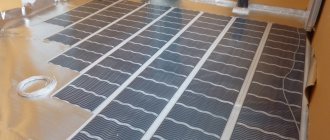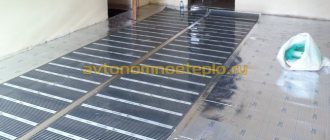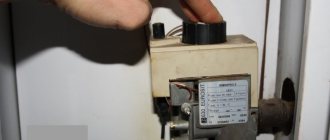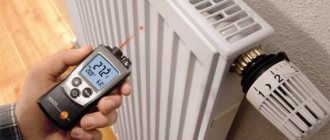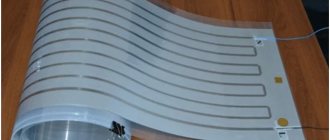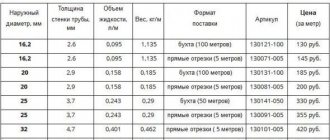Warm floors are no longer a new product on the construction market, and today almost any family can afford to install it in their apartment or house. Warm floors can be water and electric, and the latter are divided into convection and infrared based on the type of heating
Infrared heated floors have a number of advantages over convection floors: they do not dry out the furniture and air in the room, provide an anti-allergenic effect, add light ionization and evenly distribute the temperature in the room. This is a fairly young product among the variety of heated floors, but due to its positive qualities it already has many positive reviews and is gaining more and more popularity in the market every day.
By type, infrared floors are usually divided into:
- Film.
- Rod.
A heated film floor makes it possible to place it not only under tiles, but also under such fancy coverings as laminate and even carpet without additional screed. Due to this, such a system can be installed during cosmetic renovation of an apartment or house in just a few hours.
Let's take a closer look at what an infrared heated floor is, reviews about it, the pros and cons of this coating, as well as the nuances of installation.
Where is film heated floor used?
The film is used not only for heating the floor in the living room or hallway. It is laid on the loggia, in the bathroom. Mobile options are spread indoors under the carpet or mounted on the wall. This takes 2-3 minutes, but such heaters will not give the result that a home master expects from the film 100%.
Installing permanent infrared (IR) heated floors will require time and effort. But they are not comparable to the work that has to be done when installing other types.
Installing a water heated floor is much more difficult than a film one
It is important to know! Mobile infrared films require increased attention during operation. Remember that mains voltage is dangerous to life and health. This is especially true for apartments where there are small children.
Basic indicators
When film floors are turned on, individual strips begin to heat up, which lie between the polyurethane layer, which acts as an insulator.
Films can be carbon or bimetallic, but they cannot be distinguished by appearance. Warm film-type floors can last about 15 years, and one m2 costs from 500 to 1200 rubles.
Infrared heated floor reviews of which have an excellent character, namely the carbon type, are made of rods that are filled with polyethylene terephthalate, it ensures high film strength, the warranty period for such a floor is 20 years, and the cost per m2 reaches 1,500 rubles or more. Infrared film floors are produced in rolls with a width of 50 and 100 cm. When installing a carbon heated floor, it is recommended to connect the rods in a parallel pattern, so that if one burns out, the room will still continue to heat up.
Composition of the film floor system
Such a system consists of an infrared film with a temperature sensor and thermostat connected to it. All components are connected by wires according to a certain scheme. Thermostats may vary in shape, price and functionality, but they perform one task - monitoring the temperature based on sensor readings and adjusting according to specified parameters.
The installation diagram for film heated floors is quite simple
Install the thermostat near the outlet, so as not to pull the wiring, in any convenient place. There are no restrictions in this sense. Here's what netizens say about installing film heated floors in reviews.
jeka7777, Kyrgyzstan, Bishkek: Good day everyone. I read a lot of reviews about infrared floor heating, both good and bad. And I decided to install it at my home. Now I want to share my observations with you. What I would like to note first of all is the simplicity of the installation: it is installed very simply, you cut the film to the size you need, lay it on the isolon, connect the strips to each other, connect it to the thermostat, and from it from the power supply network. The floor can be laid under any surface: laminate, parquet, linoleum, carpet can even be placed under a rug or carpet... More details on Otzovik:
Laying laminate on infrared film without a cork backing is undesirable
DIY infrared film installation
At the first stage, the surface for laying is prepared. It is cleaned of dust and leveled to differences of about 2.5 mm , which are allowed.
A vacuum cleaner is used to get rid of dust. Installation of moisture insulation is mandatory. Next, a layer of insulation is arranged, which must necessarily contain a layer of foil. This will prevent infrared rays from going down and reduce their losses. In this case, foil penofol works very well, acting as insulation and blocking the flow of rays. A layer of cork and foil is placed under the ceramic flooring. The layer is leveled, and the joints are sealed with adhesive tape such as tape.
After this, a film laying scheme is drawn up. It is placed at least 10 cm from the walls and no more than 35 cm. Select a place to install the regulator; to do this, make a hole about 15 cm deep in the surface. If heating with infrared floor film is the main one in the room, then its area should occupy at least 75% from the floor area . When installed as additional heating, this figure decreases to 35–40%.
When laying strips, they can be cut along special marked lines for convenience. Laying is done with copper contacts down and towards the location of the temperature regulator. Wires are connected. The longer the film, the fewer connections are required. But the maximum length is also limited to 8 m.
The temperature sensor is connected and insulated. Installation of the regulator is carried out after the final laying of the strips and connection of the wires. The regulator can be installed permanently or plugged into an outlet. Most of the wires are successfully hidden in the baseboard.
To prevent the heating film from sliding and changing position during further finishing, it can be secured with nails or screws directly through the edge of the transparent side rim.
When connecting the leads of the copper connections, small bulges will appear. But according to the instructions, after installation the surface must be extremely flat. To avoid incidents, small recesses are made in the body of the insulation directly below the connection point.
After installing the film, it is checked for functionality, paying attention to the degree of heating, the operation of the regulator and the uniformity of heat supply. Only after satisfactory results do they begin laying the selected flooring.
The principle of operation of film heated floors
The operating principle is similar to the operation of an infrared heater. A heating element is placed between the layers, and the back of the film is covered with a thin layer of aluminum. When heated, infrared radiation is generated, which affects objects without increasing the air temperature in the room. If linoleum, parquet or laminate is laid on top of such a film, then it warms up, and it becomes pleasant to step on such a floor even with bare feet. The floor gives off heat to the surrounding air, thereby warming the room.
Advantages and disadvantages
Undoubtedly, infrared heated floors have a large number of advantages that have made it so popular in the modern construction market, but, unfortunately, there are also some disadvantages that manufacturers are usually silent about when advertising their product.
The advantages of this product according to the manufacturer:
- Quick and easy installation (no more than two hours).
- No need for screed.
- Can be laid not only under tiles, but also under carpet, laminate, linoleum.
- High degree of reliability.
- 20% energy savings compared to other types of heated floors.
- Does not dry out the air in the room.
- Air ionization.
- Antiallergic effect.
However, if we take a closer look at the issue of infrared heated floors, reviews of the product are not so clear and such a system has its own nuances:
- Installation is not as easy as the manufacturer claims. Yes, laying out and cutting the film is really not difficult, but connecting all the contacts to it is quite difficult, this will require the help of an experienced electrician, and it will take him much longer than the developer claims.
- There is really no need for a screed, but the floor surface must be perfectly flat, otherwise there is the possibility of deformation, damage to the film, or loose contacts. Therefore, if the floor in the room is uneven, it will still be necessary to make a screed or lay another covering for leveling.
- Energy savings really take place, however, only with good, uninterrupted operation of the general heating.
- By itself, infrared heated floors really do not dry out the air, however, in combination with central heating, this effect disappears.
- Air ionization is good, but with the anti-allergic effect everything is somewhat more complicated; reviews on this issue are mixed, so the benefits have not yet been proven.
- The manufacturer states that heating occurs due to the heating of the floor and furniture in the room, however, with strong heating, wooden furniture can deteriorate and dry out. Therefore, it is not advisable to place it on areas with infrared heated floors, which should be taken into account when installing.
And do not forget that the air and floor temperature sensor in such a system cannot be covered, otherwise it will begin to work incorrectly.
Technical characteristics of infrared heated floors: electricity consumption
When thinking about purchasing this type of heating, the home master will try to clarify all the characteristics of the material in order to be sure of the correct choice. And the parameters are:
- The heating temperature depends on the power consumption. At 150 W it will be +45°C, at 220 W – +60°C, and at 400 W – +80°C;
- Radiation length - this parameter ranges from 7 to 20 microns;
- Operating voltage – 220÷230 V;
- Melting temperature. This material is +100÷265°C;
- The electromagnetic field is not radiated;
- The percentage of long infrared waves is 90.5%.
Film for heated floors can be like this
The cost-effectiveness of such heating is beyond doubt. Reviews about the energy consumption of film heated floors from a large online resource fully confirm this:
lyudmila1957, Russia, Ulan-Ude: ... Regarding the connection to the electrical network, if a large area is covered, then it is better to connect it to a separate machine, you need to consult an electrician. The floor heats up instantly, after 5-6 minutes. the floor is already warm. The programming mode was selected: in the morning from 6-8 o'clock, in the evening from 17 to 21 o'clock and this is quite enough. With this mode of use, the energy consumption is small, and there is no significant increase in the bill. Tepletto infrared film heated floor met all our expectations... Read more on Review:
This kind of heating is really very economical
Installation process
Before installing an infrared heated floor, you need to read reviews about it and find out whether such heating will suit you. Next, you need to carefully plan the sequence of work. The first thing to do on the room plan is to mark the places where large furniture is located, as well as a 200 mm strip near the wall - there will be no heated floor here. Next, we need to measure the remaining free space to determine how much film we will need.
Next, a heat-reflecting screen is placed on the floor so that the radiation goes inside the room, and the joints of the screen are taped. To find out what it is, just look at the foil - a typical heat-reflecting screen.
Sorry, nothing found.
After this, the infrared film itself is laid, and this must be done with the copper parts facing down, and when cutting into parts, one must be guided by specially applied markings. The sections are connected to each other by wires and clips, on one side of the sections they are attached, and on the other they are simply insulated with a special material included in the heated floor kit. After connecting the parts of the film floors, it is necessary to install and connect the thermostat. This part must be powered directly from the electricity meter. Usually the thermostat is supplied with a connection diagram, according to which the installation is done.
After the thermostat comes the temperature sensor. It should be placed near the nearest section of film, directly on the graphite section (between the film and the reflective screen).
Important: if carpet or linoleum is placed on a warm floor, then the system must be covered with fiberboard sheets. Typically, an infrared film floor, installed according to all the rules described above, has the best reviews due to its safety, both for health and for the environment.
Now you need to check the operation of the system. We turn on the heated floor to the network and check the voltage, operation of the thermostat, sensors and other nuances of the system. If everything works as it should, then you can lay the floor covering on top.
Features of infrared film for heated floors
In terms of its effect on the human body, infrared radiation is similar to sunlight. Like in the fall, when it’s cold outside, but exposed skin feels warm. It's the same with IR rays. If you put your hand under them in a cool room, you can feel it.
For some diseases, rays have a healing effect. And if infrared saunas are contraindicated for tumors or individual intolerance, then warm floors are better in this regard. A person is not exposed to direct rays; they heat up the floor covering.
It will be pleasant to walk on this floor barefoot
The disadvantage is the inability to move large furniture indoors. If the surface above the heater is covered with a cabinet, the rays begin to return, which leads to combustion of the thermoelement.
The film is sold in rolls of various widths - from 50 cm to 1 m. If you plan to install it under linoleum, parquet or laminate, you should choose a denser material.
Helpful information! The floor covering without rigid fixation puts pressure on the surface of the heater. There is also (albeit minor) friction. As a result, the thin material may become unusable.
Some craftsmen claim that thicker material “steals” space. But this is not just wrong, but rather even absurd. Who can notice 2-3 mm with a ceiling height of 2.7÷2.8 m?
Installation is so simple that even a fragile girl can handle it
Wall heater “Good warmth” - reviews
Alexander
https://optbay.ru/obogrevatel-dobroe-teplo/reviews/
My wife bought it for the dacha. It turned out to be the best solution for the dacha. Before this there were other heaters, some more powerful, but it was not the same. And this option turned out to be the best. We needed something: to warm the room, keep it warm, so to speak, and at the same time not create tension for others. He copes with this. Safe and consumes little electricity. Just what you need.
Alexander Boryaev
https://vk.com/topic-516460_30095378
Super thing. in every room. just made an order in a group. the other day stop. 700 rub. +18%+ available for everyone.
Isilled
https://otzyv.expert/otlichnaya-vesh-dlya-nebolshogo-pomesheniyano-k-sozhaleniyu-ne-yavlyaetsya-osnovnim-istochnikom-tepla-2136919
Advantages:
Beautiful appearance. Doesn't dry out the air
Flaws:
Doesn't heat even a small room well enough.
Details:
Where do I want to start... Design. It fits very nicely in the child’s room, it was originally bought instead of a heater (they didn’t want to take a heater because there was a small child in the room, and I didn’t want to dry out the air too much) and I left my choice on this picture, this is a wonderful thing for small rooms, the painting warms the objects and from them the room heats up, and at the same time does not dry out the air. In the fall, they didn’t have heating yet, we decided to try it out, it heats up instantly if you stand next to it, you feel warm, but I can’t say that the room became very warm, I expected a greater effect from the picture. so if you want to use it as a heater replacement, it’s not the best option!
Anonymous
https://www.domodel.ru/index.php?topic=650.0
It depends on what purposes. My relatives bought several pieces out of greed, then spat. And they are not allowed in the bathroom, and they are not allowed on the balcony, and in the countryside, too, only under certain conditions, and there are a bunch of other “contraindications.” But that was a few years ago, maybe things have changed.
Natalie77
https://www.optwear.ru/forum/topic7536.html
Last winter I bought such a thermal painting, we have a corner bedroom, the wind blows through it in winter, so such a thing was simply necessary, it paid off 100%, I hang it on the window on the curtain, I tried it on the wall and on the closet, they heat up, although they seem to say that it is safe, I decided not to risk it. Still very good. I’m glad that practically no electricity is consumed, compared to oil radiators. In general, a worthwhile THING!
Irene
https://dv0r.ru/forum/index.php?topic=9175.0
The poultry house will not warm up well if you just cover the walls with it. I used it under rabbit nests. There are so many nests and “DT”.
mother of sons
https://38mama.ru/forum/index.php?topic=181560.0
The joint venture has a purchase called Dobroye Heat or wall heaters, I bought it in the spring, it’s inexpensive, it’s enough heat for a room of 16-18 square meters.
Kseniya
https://www.babyblog.ru/community/post/housedesign/3203895
I sincerely recommend a convector to you, now we live in a warm apartment, but 7 years ago we lived in a very cold one... And the convector saved us all winter. We have a company called noirot, and in general there are a lot of them, we had the most powerful one at that time... In addition, it doesn’t just heat, but is programmed for a certain temperature, and turns itself on and off when needed...
Then my husband took him and he was at work for a long time, heating his office)))) And now he has been working in our relatives’ country house for 3 years - one convector heats the entire floor.
AmazovAndrej
https://otzovik.com/review_5388318.html
Advantages:
Beautiful, maintains temperature well.
Flaws:
Easy to damage
The first time I came across this heater was with friends and immediately went to buy it because I really liked it and didn’t know what to decorate the wall with. I have been using this heater for several years. Bought for additional heating of the room. Now let's move on to the pros and cons. After looking at the reviews, I immediately strengthened the fastening cord upon purchase. After they turned it on, they didn’t turn it off for the first ten days. The temperature in the room was very comfortable. After washing, clothes were hung nearby; there was a very convenient drying rack)))) The pattern was a little faded, but tolerable. The entire design of the heating elements is very flimsy, so the less you touch, the better. Although it is stated that it heats a radius of 3 meters well, in fact it is two and a half.
Cambium
https://otzovik.com/review_3694553.html
Advantages:
Does its job perfectly.
Flaws:
No power regulator.
Good afternoon. With the arrival of a child in our house and the onset of winter, the question arose about purchasing a heater. At first we bought a floor heater, but the small child constantly tried to touch it and put rubber toys on it, which is not safe. After reading the information and talking with other mothers of small children, I learned about the “good warmth” wall heater. I found many sites on the Internet where they are sold. I was pleased with the presence of different pictures on the heaters and the relatively low price (1,250 rubles in 2015). I chose a heater with a landscape. When this miracle was brought, it was rolled up. At first I was skeptical about the capabilities of this heater and its safety. After a year of use, I can safely say that I really liked the heater. We have it hanging on our wallpapered wall. During the use of the heater, the wallpaper under it did not turn yellow. The heater heats the room smoothly without burning oxygen, compared to a floor heater (I think). It is safe, even if you touch it with your hands there is no burn. The only negative is that only one mode is either on or off. No power regulator. I recommend.
Krischegevaro
https://otzovik.com/review_6432683.html
Advantages:
efficient, convenient
Flaws:
No
In our family, the Good Warmth heater appeared about 10 years ago and still works great. Our grandmother bought it somewhere. The heater travels with us from the apartment to the dacha and back. At the dacha, it helps on rainy, cool days when the house is humid. I place it by my son's crib at night. It is good because it works at a certain temperature, neither hot nor cold. When transporting, it takes up a minimum amount of space, and can be easily stored behind the wall in the apartment. Its thickness is no more than a sheet of cardboard. Now I don’t see such heaters on the shelves, and it’s a shame.
Andrey Petrov
https://irecommend.ru/content/eshche-raz-pro-dobroe-teplo-i-pochemu-ego-nuzhno-ispolzovat-po-instruktsii-chtoby-ne-spalit
Hi all! I’ll write the story of my “Good Warmth” and why it turned out to be short..)) And like any electrical appliance, it must be used according to the instructions, despite the fact that the heat is good. I considered buying such a heater as an additional source of heat during such an unpleasant period in the fall, when it got colder, but the heating had not yet been turned on and the apartment was cold for a couple of weeks.
I bought a 200 Watt model, it uses little electricity. I didn’t want to hang it on the wall, because I decided to put it next to the computer when I’m sitting at it. You turn it on, and after half an hour you feel that it really warms you up pleasantly. And when you enter a room with a heater, you clearly feel the temperature difference compared to a room without one.
So, everything was wonderful, but one day relatives arrived, and my mother was looking for some things in her suitcase, which always lay quietly on the closet. (By the way, it’s a pity, it was bought in the early 70s, during my mother’s youth. More precisely, not the suitcase itself, but the stickers inside its lid. It was covered with photographs of young Soviet and foreign actresses, and I remember these magazine clippings from childhood ...So, a little sentimental digression..))
So, having found some things in this suitcase, my mother automatically laid it flat by the window. The currently unnecessary “Good Warmth” was also placed flat on it; they thought it was turned off and the sister, when undressing her niece, put things in a heap on it. A children's overalls, a children's hat, a blouse, something else... I turned on the pilot surge protector, plugged my cell phone into it to charge and we all went to bed. It was about eleven o'clock at night...
And at this time, Good warmth, covered with children's overalls, resisted for a long time. )) But there was nowhere for the heat to escape, the temperature kept rising and at about half past four in the morning we smelled smoke, turned on the light, the whole apartment was filled with smoke and we didn’t understand where it was coming from. Everyone was running around.
First of all, we inspected the sockets, the stove, we even looked into the lobby towards the elevator, there was no open fire anywhere. Eventually the father saw that things were smoldering on the heater.
What's the result? A half-decayed children's overalls (which means the Chinese brothers still make children's clothes not from toxic things, since we didn't suffocate.))) From the children's hat, only one pompom remained, the whole thing was rotted. The blouse seems to be intact.
By the way, the photo shows that there was a plastic bag folded several times on the suitcase. It didn't flare up, just warped a little. All the heat was rising.
So this unpleasant story served as a lesson to us that we need to treat electrical appliances with care.
What about Good Warmth? As a heater it is not bad, economical and compact. I don’t know if there are such heaters with a switch, that is, the socket is constantly plugged in, and a person turns it on with a button, like a floor lamp. And there should be a diode on the button that would light up when the heater is heating up. This would additionally show that it is enabled. Maybe the manufacturer will read the review and make changes to the design. The heater will become 150-200 rubles more expensive, but it will be visible when it works. Or they can do it with or without a button...
But please treat the devices more carefully, it says not to cover, do not cover, so that it doesn’t turn out like ours! Bye everyone, all the best! Happy warming!
The site administration considered my photos taken with my phone to be of poor quality, so if anyone is interested in looking at the photo of the burnt Good Warmth, after it was covered, I will send the photo by email upon request. Yes, the photo is of average quality, but not every person, when his heater burns out in the middle of the night and the whole apartment is in smoke, takes out a DSLR camera with a tripod to take high-quality photos..))
Waseca
https://irecommend.ru/content/vpolne-dostoinyi-obogrevatel-dlya-komnaty-ili-dlya-dachi
This is my second year using it. In the summer we take it to the dacha, when the nights are still cold, and in the spring, when the heating is turned off, although in especially cold times we also turn it on. I bought it with a pretty decent picture, without crazy bright colors, I even like how it looks, it doesn’t spoil the picture of the room. There is also a fan heater, but I rarely use it, it uses a lot of electricity and dries out the air very much. One plus is that it warms up very quickly. D.heat heats the room for quite a long time, something like oil and radiators, but takes a little electricity. It is literally difficult to get burned on it; the metallized strips on the inside are hot but not scalding during operation. Warm air flows in a soft wave and the room is not like in the Sahara, where a hot and dry wind blows (that’s the feeling from a fan heater), but like from a stove, it feels warm. It takes about 20 minutes to warm up an average room, of course, if there are no drafts in it. It hangs calmly on the wall, slightly away from the wallpaper, hangs for hours, both under it are simply warm, not hot. I simply don’t see the point in a thermostat, the heat isn’t crazy, it’s not possible to heat an apartment with it, only a separate room, but just heating it up makes it warm and cozy. At first there was some kind of smell, but now there is nothing. It hangs on, I won’t say that for days, but at night easily, although at first I was afraid, turned it on for a couple of hours, and turned it off at night. A completely worthy alternative to batteries in the country or when there is insufficient heating in the apartment. It takes up space like a roll of wallpaper. Rolled it up and put it away. Convenient, you can’t hide the oily one on the shelf))
Marie09
https://irecommend.ru/content/dobroe-teplo-seriya-barkhatnyi-sezon-risunok-fregat
I have long wanted to buy a small portable heater that would quickly and safely create warmth in a room. I settled on a flexible film wall heater “good warmth”, “Velvet Season” . Frigate drawing
Dimensions: 120 x 58 cm. Thin as a sheet of paper. Easily rolls up. Lightweight 350 gr. Convenient to carry. It is hung on 1 loop from above, which is why it may not hang evenly. It would be better to make 2 loops in the upper corners. It has a long cord and operates on 220 V.
Design: Heaters of the “Velvet Season” series have different designs. I liked the frigate on a white background with silver stripes. Perfect for children's rooms, as a wall decoration.
Functionality: Does not absorb oxygen, therefore does not dry out the air. The surface of the heater heats up to 65 degrees. It feels warm to the touch, but not hot. It starts working immediately after switching on, no need to press until it warms up.
Energy consumption: Power 500 W, quite economical.
Heating area: Local. If you hang it above the bed, it will only heat the bed, it will not be suitable for the whole room.
Price: Different everywhere. I bought it in an online store for 850 rubles. + delivery (pickup free), but in regular stores I saw a price higher than a thousand rubles.
I recommend using this heater at home in the fall, when it is already cool outside and the heating has not yet been turned on. Also good for a garden. Overall, I'm happy with the purchase!
Mildhet
https://irecommend.ru/content/strashnovat-no-udobnyi
Clearly, the manufacturer did not think at all about the appearance of the heaters. Sitchiki of crazy colors strike the heart (the similar heater “Summer Time” has colored self-adhesive films - at least a little better). In general, the manufacturer did not care at all about how all this would look. Plus the lack of a thermostat switch (we took a more powerful model and now, before the real cold has set in, it sometimes gets too hot: you have to regularly jump under the table to unplug the cord from the socket/put it back in). But despite all this, it is still very convenient. Firstly, it fit perfectly under the table. My husband’s table is located against the wall bordering the street, and therefore very cold. My feet are cold. And there’s not enough space under the table: you can’t place any ordinary heater (even a small oil pan, even a small fan heater) directly at your feet, but putting it to the side will dry out the air more than warm your feet. In general, when I saw this heater in the form of a flat sheet, I immediately realized that this was what I needed. We pushed it between the table and the wall - it stood up perfectly! Now it’s the feet that are heated, rather than the entire room being heated. At the same time, the air does not overheat and does not dry out. In general, a very comfortable thing. Well, secondly, it seems to be true about infrared heating: it heats surrounding objects much more strongly than a higher-power oil pan. And warm surfaces are again very comfortable. In general, if the manufacturer improves the look and adds a thermostat/switch, then it will be just a gorgeous thing.
Candy555
https://irecommend.ru/content/otlichno-podderzhivaet-teplo-v-komnate-inogda-dazhe-zharko
I have been familiar with the Good Warmth heater for a long time. Before that, we had an old version, but it burned down at the old dacha.
When we built a new house, I immediately started looking on the Internet for a new heater and found it.
Now they are even more beautiful and practical.
I bought such a cute pussy for only 780 rubles. He has been serving us for 2 years now, faithfully.
Since we don’t yet have heating in the house, and sometimes it’s cool, especially in spring and autumn, we use Good Warmth quite often. Moreover, we have a small child.
It heats up a room measuring 3mx6m instantly and holds the heat very well, sometimes it even gets hot.
Our heater is hung from the ceiling on a nail. Spends very little energy. Some advantages.
Once they took him into the city to an apartment, when heating had not yet been installed. He helped us out at night.
highly recommend.
Advantages and disadvantages of film floors
Such heating is interesting because, despite a lot of positive qualities, it has no negative qualities, with the possible exception of the high cost when purchasing high-quality material. But it’s not worth saving on this.
Among the advantages, we note the ease of installation, which even an inexperienced master can handle. The ability to heat both the entire room and its individual parts is also convenient. It is also good news that even if one of the plates burns out, the rest continue to function.
Types of infrared film heated floors
If we talk about the popular carbon film, then there are two types of heated floors - striped and with continuous coating. Both types can be cut into segments, but when a line on striped carbon fiber burns out, the entire segment stops heating, while with continuous spraying it is almost unnoticeable. In addition, a film with continuous carbon coating heats the surface more evenly. This may be practically unnoticeable when walking on such a floor, but the thermal imager clearly shows this.
You can see how uneven the heating from the water heated floor is
Self-regulating films made in Korea have now appeared. When a certain part overheats, heat transfer at that point decreases. But the cost of such “pleasure” is high – about 3,400 rubles/m.
The nuances of installing a warm infrared floor under various floor coverings
Laying infrared film under laminate, parquet or linoleum is almost identical. The only differences are in the installation under the tiles. It is worth considering step by step the algorithm for such work. For greater understanding, we will dilute our instructions with photo examples.
Film heated floor under laminate: step-by-step instructions
| Photo | Action to be performed |
| A lavsan heat insulator is laid on a dry, prepared surface. It will prevent the temperature from being wasted on heating the floor, reflecting the heat upward. | |
| We install a thermal sensor through the slots in the heat insulator, which is attached with adhesive tape. A groove is also cut under its wire. | |
| It's time to lay down the film. If several strips are laid, they should lie closely, but not overlap. Otherwise, the heating elements may burn out. | |
| Be sure to insulate the cut conductors. A special insulating tape comes complete with infrared film. | |
| We also cut through lavsan for isolated places. This is done so that there are no irregularities left after. The insulated parts are completely recessed into the slot. | |
| On the other side of the heating element, we connect the wiring using the supplied contacts, which are crimped with pliers (if there is no special tool). | |
| We also “sink” the contacts into the slot and secure them with tape. Similar actions are performed with another contact strip. | |
| Dry cleaning is required. It is recommended that after the film has been brushed, cover it with cellophane. | |
| The penultimate stage is laying fiberboard. This must be done carefully so as not to damage the heating elements. | |
| All that remains is to lay the linoleum and you can enjoy the warmth coming from the floor. As you can see, there is nothing complicated in installing a film floor under linoleum. |
Related article:
Warm floor under laminate on wooden floor. In a separate publication you can find out how heated floors are installed on a wooden base and all the installation nuances.
Film heated floor under laminate - nothing is simpler
If it is clear how to install a film heated floor under linoleum, then there will be no problems with the laminate. We perform the same actions, only instead of fiberboard you need to lay a cork backing. Although each master does this work in his own way. We invite you to watch a short video of the installation of a warm film floor under a laminate:
The same technology for laying film under parquet.
Laying infrared film heated floors under tiles
The technology for laying film under tiles is quite complex, and therefore it is not worth doing such work. Let's start with the fact that the costs of the material will be quite high, and you will have to put a lot of effort into the work. In addition, tiles or porcelain tiles heat up evenly, and it is more convenient, easier and cheaper to install a heating cable.
Laying film under tiles is quite complicated and irrational
Related article:
Which warm floor under tiles is better? From this publication you will learn about the nuances of using TP under tiles, the subtleties of installation, the pros and cons of different types of floors.
Compatibility with floor materials
The film heater is suitable for all floor coverings ; only for some materials certain rules must be followed.
Ceramic tiles tolerate powerful infrared floor devices well; they do not warp or collapse under the influence of heat. Linoleum is more capricious in this matter. Many website visitors leave reviews saying that after using warm film floors, the linoleum coating was damaged, it became wavy or warped. This can happen if you use a material for installation that is not intended for covering heated floors.
When purchasing linoleum, you should pay attention only to those types that have a symbol on the back that allows the material to be used to cover an infrared floor film. Other types of linoleum behave poorly when heated and even begin to release harmful substances into the atmosphere.
To install film floor heating under linoleum, you should install an automatic power regulator, which will determine the low heating temperature. If you follow all these simple rules, then no troubles will arise.
As for the laminated coating, it can easily withstand any power of infrared heating. Carpeting also works great together with a warm film. In addition, the carpet is easily dismantled , which allows you to remove the heating film in the summer and install it in cold weather.
Limitations for infrared floor films
- for films installed without automatic control, use the optimal film power, which should not exceed the values permissible for each floor covering;
- for linoleum, choose a film that heats the floor only to a temperature of 28ºC and no more, or install automatic control;
- large rooms require increasing the power of the device, which is only possible with ceramic tile floors, and this is not always convenient;
- In rooms with ceilings higher than 3 m, the use of floor heating film is not effective; it is advisable to use it as additional local heating.
Connecting film heated floors to the network
From the step-by-step instructions we learned how the wiring is connected to the heating elements. Next, the cable goes to the thermostat, where the temperature sensor is connected. Nothing complicated.
Very important! Never connect live wires to the temperature sensor. All work is carried out with the power supply turned off! Take care of your life and health!
Installation of a thermostat for a film heated floor system
The thermostat is mounted directly next to the outlet so that there is no need to pull wires. Next to the socket, using a crown, a similar hole is drilled, into which, in addition to the wiring from the temperature sensor and infrared film, the phase and zero from the socket are inserted. To understand how to connect an infrared heated floor to a thermostat, you need to look at the diagram that comes with the kit.
The thermostat may look like this
Safety rules for installing electrical equipment
As already mentioned, the main rule is to relieve tension before starting work. But even with the tension removed, you should understand that complete composure and attentiveness are required. You cannot deviate from the scheme, even if it seems that a different way is better. This may result in a short circuit. At best, some apartments will be left without electricity, at worst, there will be a fire.
Basic rule! If you doubt your ability to assemble a circuit even for a moment, call a specialist.
Electric shock is life-threatening
Use for main heating
Now let’s figure out whether it’s possible to heat a house only with the help of infrared heated floors. To do this, let's calculate its heat flow and see if it is enough to cover heat loss - that is, to heat the room.
First, let's determine the temperature of the heated floor. According to SanPiN 2.1.2.2645-10: 4.3. The difference between the indoor air temperature and the temperature of the wall surfaces should not exceed 3 °C; the difference between the air temperature of the premises and the floor should not exceed 2 ° C.
Let's assume that the room temperature is 20 °C, which means the floor surface temperature should not exceed 23 °C.
The heat flow for an infrared floor will consist of two heat flows: radiant and convective. The floor surface for example is ceramic tiles (emissivity = 0.9).
Radiation:
T1 – floor temperature (23 °C);
T2 - room temperature (in a living room, a comfortable temperature for a person is assumed to be 20 ° C)
Qisl is the heat flux transferred by radiation.
Substitute the values into the formula:
Convection:
The heat flow transferred by convection is determined by the formula:
where α is the heat transfer coefficient by convection, which is determined by the formula:
It follows from this that thermal convection:
Qk = 3.46 * (23 - 20) = 10.38 W/m2.
We add up the heat flows and get:
Q = Qizl + Qk = 15.64 + 10.38 = 26.02 W/m2.
The manufacturer assures that this type of heating can be used as the main one. In a rough calculation, 100 W/m2 is required for main heating (i.e. to cover heat loss), which means that the heat flow value should be approximately 100 W/m2. And in this case, the heat flux is only 26.02, that is, three times less than what is necessary to ensure that the room does not freeze .
However, if we assume that the power of the infrared heated floor will be the required 100 W/m2, then its temperature will be higher - about 35 ° C , which is unacceptable according to the standards prescribed in SanPiN 2.1.2.2645-10, and is also uncomfortable for people.
Thus, a heating system consisting only of infrared heated floors will not be enough for normal heating.
Infrared heated floor Keeply
Consider the warm floor Keeply OPTIMAL 160:
This equipment has enough power to cover heat loss. The question arises: what will the floor temperature be at a given power? If the specified power is 160 W per 1 m2, then at this power the floor temperature will be above 35 ° C (the calculation is similar to the previous one).
The best manufacturers of films for heated floors: a brief overview
The most famous brands in Russia are Teplolux , Q-Term and Caleo . The quality of the products of these brands is beyond doubt and their popularity is high. We will talk about the cost of their products below, but now we suggest you read a review of one of them.
"Caleo" is a fairly well-known company producing infrared film
Kutepof, Russia, Inta: Hello dear readers. I want to tell you about Q-term warm floors. I live in the north, not far from Vorkuta, you may have heard about such a city, but here there are very harsh winters, and not so hot summer days. (...) So I consulted with my comrades and found out about something like Q-term underfloor heating. Installation is very simple, the main thing is to prepare a flat surface, and then you can lay anything on top, carpets, linoleum, laminate, etc. The price is much better compared to heating cables, and the energy consumption is generally low. More details on Otzovik:
More expensive films "Teplolux" Slim Heat
Who makes infrared flooring, reviews of various brands
Infrared floors are manufactured by Russian, European and Chinese companies. If we talk about quality, the Chinese version is the cheapest, but its quality is not always good. The most famous brands are Caleo, Teplotex, Terma, Nanothermal, Heatplus, Enerpia, Nbsp it, Monocrystal - which one is better to discuss below.
Judging by the reviews, the most expensive and high-quality Monocrystal. But the company produces it using its own technology, which has no other analogues. Among the most discussed and inexpensive is Caleo, its price starts from 350 rubles/m2. But all models of the IR system, including the inexpensive Caleo, differ in the design of the heating system. Since we are talking about a floor for a wooden house, it is best to use the film option. It happens:
- Pasty.
- Wired.
- Ultra-thin.
Their main difference is in price and conduction system. Caleo floors are most effective in a timber home with a pasty appearance. This system has a specific content and, judging by the reviews, it is the most functional. But if you compare wired, ultra-precise and paste, then the latter is the most expensive.
Prices for different brands of IR flooring
| Brand | Price, rub./m2 | ||
| Wired | Ultra-thin | Pasty | |
| Caleo | from 350 | From 500 | From 750 |
| Teplotex | From 450 | From 700 | From 800 |
| Terma | From 550 | From 780 | From 890 |
| Nanothermal | From 400 | From 650 | From 750 |
| Heatplus | From 500 | From 680 | From 750 |
| Monocrystal | From 700 | From 860 | From 1000 |
| Enerpia | From 450 | From 700 | From 800 |
The biggest disadvantage that users noticed about the paste-like IR floor is that it is almost impossible to repair it after it breaks, and the substrate for it is the most expensive. And it’s almost impossible to do the installation yourself without special training. You can install other types of film flooring yourself.
Where to buy film heated floors: price of material
You can purchase infrared film for heated floors either in a regular store or online. In the latter case, the cost will be significantly lower - about 15-20%. Here are the most famous brands with some characteristics and cost of products.
| Brand | Teplolux | Q-Term | Caleo |
| Power, W | 150-220 | 180-220 | 130-230 |
| Thickness, mm | 0,334 | 0,4 | 0,4 |
| Film width, m | 0,5 | 0,5 | 0,5-1,0 |
| Strip length, m | — | up to 150 | 8 |
| Cell length, m | 0,25 | — | — |
| Voltage, V | 220 | 220 | 220-230 |
| melting temperature, 0С | — | 110 | 110-130 |
| Cost, rub./m2 | 1000 | 900 | 850 |
Prices for such material may vary depending on the region.
